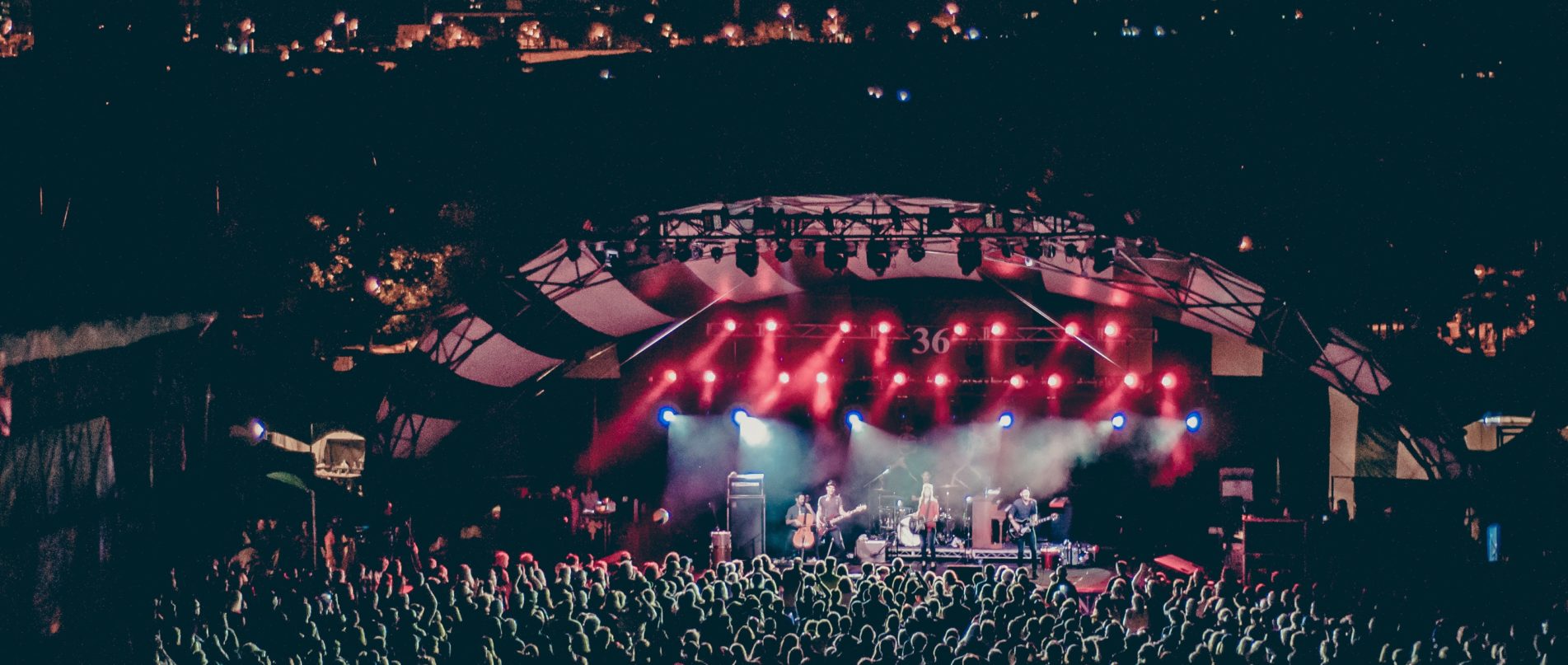
Prompt Images
Many people mark their height against a doorframe. The etchings leave a trail of passing time, and track their growth year after year. It is a classically Rockwellian concept known in kitchens and hallways across America.
I recently stumbled into a new way to document growth: attending a semi-annual Bon Jovi concert. It is a classic rock well-ian concept, which provides both the band and me the space for measuring against our past selves.
Last week, I got a chance for another check-up, my ninth, when newly minted Rock and Roll Hall of Fame Bon Jovi, came through D.C. to finish out the American leg of their “This House is Not for Sale” tour.
Bon Jovi became famous in the 80s for telling underdog stories of kids who live for the fight when that’s all they they’ve got. In 2018, the band was inducted into the Rock and Roll Hall of Fame, and still, maintain their underdog status, this time against music snobs. Recently, Bill Wyman of Vulture ranked all 214 acts in the Hall of Fame and he mocked Bon Jovi all the way down at 214, calling them unimportant and a “crappy band.”
As I waited for the concert to begin, I couldn’t help but feel a bit miffed by Wyman’s dismissal of a band that had meant a lot to me growing up.
Just like everyone is entitled to, Bon Jovi has experimented since you probably last enjoyed them.
2007’s album Lost Highway found the band embracing rock as always, while incorporating a little bit of a country sound. Perhaps they were playing off some of the success the band found by collaborating with Jennifer Nettles on the song “Who Says You Can’t Go Home?” or perhaps they were playing into mainstream radio formats.
2009’s The Circle album took another two-step, in the balladification and countrification of the band’s sound. Six years later, Building Bridges continued those motifs, as past hits faded further from rock to classic rock to how is this the same band that gave us “You Give Love a Bad Name”?
For someone like me who hasn’t been tempted, even once, to listen to any of Bon Jovi’s last four studio albums, a concert celebrating their newest songs is always going to be a dicey proposition. Heck, I didn’t even know that Richie Sambora had left the band and that happened more than 5 years ago! Last week’s show bookended my concert-going experience with my first time in March 2001 (most definitely with Sambora).
As I sat and waited for the band to take the stage, I had no real sense of what direction their newest album would go.
There were hints throughout the show, that things were different than when I’d seen them in 2013, 5 years prior. Working an almost every other song pattern between the classics and the new, obligatory tracks, Bon Jovi did not seem as disinterested by the contemporary offerings.
The show opened with a motion graphic, shot in first-person perspective and zooming through space and time. It was a bit much. One might think that even a rock star who plays a double-neck guitar would have scoffed at its excessiveness. But it set the tone: the band’s newer songs were watered down facsimiles, undoubtedly still of the band’s DNA, echoing Bon Jovidian themes of yore: love, time, lost love, lost time, and being almost good enough.
The sound was thin, but the hair was still full.
And while I wish those had been reversed, it is still clear which is the bigger identifier for the group. Plus, the emptiness of the sound may just as easily be attributed to the venue: a basketball arena not built for rock show acoustics, or even suitable enough for the Yanny vs. Laurel debate.
Specifically the band’s biggest moments paled because of the audio deficiencies. The body-snatching cold-open of “You Give Love a Bad Name” lacked appropriate levels of indomitable umbrage. And maybe worse, the drum riff in “I’ll Be There For You” fell far short of gut-busting. Repeat concerts have sometimes lack new and exhilarating moments, so you have to clutch to the familiar ones you can. Those are the moments you are supposed to feel in your chest and leave your ears ringing.
But the concert did provide some highlights, too. Jon ambled through the floor seats and up a set of stairs to sing two songs from an aisle, far away from the stage (think Timberlake at the Super Bowl). Also Jon has not lost his eternal ability to play with the crowd. Back and forths during “Livin’ on a Prayer” and “Lay Your Hands on Me” rollicked like they always have.

Meanwhile, in front of a screaming arena of fans, Jon has morphed again, this time opting for black skinny jeans that could have been (and were) mistaken for leggings, from across an arena. The get up, with his black zip-up hoodie, would have suggested that the only steel horse Jon had ever ridden was a SoulCycle. These changes may just be maturation; no one questioned Bruce Springsteen when he traded in his light blue jeans and white t-shirt for the all black colorways. Frankly, Jon dressing ala 1986 Slippery When Wet would have been more curious decision.
And though that can be the fodder for punchline, or the basis for selling out, you can also call that evolution.
It’s easy to deride Bon Jovi in 2018. To say they’re not the same band they used to be. But the truth is that I am not the same kid from that 2001 Bon Jovi concert either, and that lens (figuratively and literally, I wear glasses now) changes everything, too. In 2001, I was a 16 year-old concert virgin, focusing equal parts on how to obtain alcohol, how to impress the girls that I had crushes on, and just understanding the songs. Sitting in the upper balcony didn’t matter at all, as I became rewired by this new experience.
A few years later, I found myself with 13 friends but only 12 tickets, at another Bon Jovi show (#3), this time at Gillette Stadium. Still focused on alcohol, still trying to impress the girls I had crushes on, and now scrambling for two more tickets. I had not come very far. (For the record, we traded seven beers and a few Mike’s Hard Lemonades for two floor seats an hour before the show.)
Since then, I’ve gone to Bon Jovi concerts with a college girlfriend (#5) who also loved the band and my brother who doubled as an adult roommate (#8).
This time (#9), I went as a married man with no girls to impress. Truth is, my wife was away on business travel, so I went with a coworker. And I didn’t sit in the rafters because I lucked into tickets in a luxury suite, privileged with a fridge full of free beer. Just as Jon and the band grew older, more mature, and more financially sound over the 15 years, I had too. That changes anyone.
And while I can’t speak for Jon’s feelings about his own evolution, I had mixed feelings about how this Stella-Artois-drinking, lucking-into-luxury-box me measured up to the 12-tickets-for-14-people, devouring-each-song-me.
And though that can be the fodder for punchline, or the basis for selling out, you can once again call that evolution.
Music critics like Wyman give Bon Jovi demerits for cultural insignificance, which could have been said about almost all 214 bands on the Hall of Fame list. He mocks them by suggesting they are actors, playing a rock band, conveniently pointing out Jon’s film career, as if he is the only rock star to try on Hollywood. The criticisms are jam, made from low-hanging fruit, as Wyman dings them for every infraction he would never levy against other acts like solo John Lennon (#43), Rod Stewart (#89), or Dire Straits (#127).
Yet all of his words, hot air enough to fill an empty stadium, all while Bon Jovi plays capacities 35 years after they started.



